The topic today is plants in the pond, not around the pond, but growing in the water. But first, I must address briefly the plants that surround the pond.
Through the years I have seen many ponds that are intended to mimic a natural water feature, but are left naked, ringed by stones, stark in the absence of plants tumbling over the edges. Today we’ll not discuss specific plants that should be planted near a pond (that is for another day, but hosta and Japanese forest grass are excellent choices for a start, below), but only to emphasize that there must be some, and more are better than less, for in a natural setting the forest’s vegetation often grows right up to the water.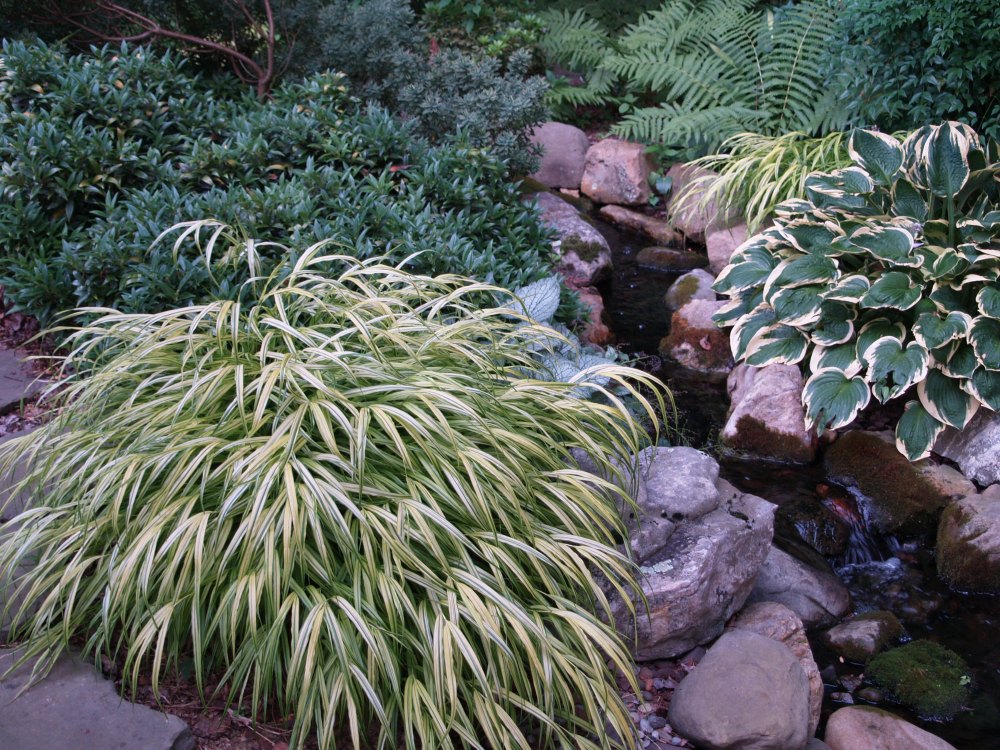
If funds are limited after the pond is constructed I would recommend planting in the soil surrounding the pond, and affording the water plants as a few pennies are found here and there. Fortunately, there is no need to purchase large, or expensive aquatic plants, most grow rapidly (some too quickly), so that the smallest and least expensive sizes available are the most reasonable to purchase.
There are excellent books that discuss the virtues and categories of aquatic plants, and I have no intention of writing another, so this discussion will be as brief as I can manage. But, I’ve learned a thing or two from my ponds, good and bad, and perhaps this could be the starting point for your research if you decide to explore further.
Floating plants, submerged, marginals, and other aquatics
I do not have any floating plants in my ponds, simply because I have skimmers that draw surface debris that is captured in a leaf net, and floating plants’ roots are not anchored in soil, so they are difficult to keep in place. Duckweed, water hyacinth, and others grow quite rapidly, and will need to be thinned several times through the summer or they will cover the pond’s surface completely. It should be pointed out that water hyacinth is banned in most southern states where it does not die in the winter, and becomes invasive.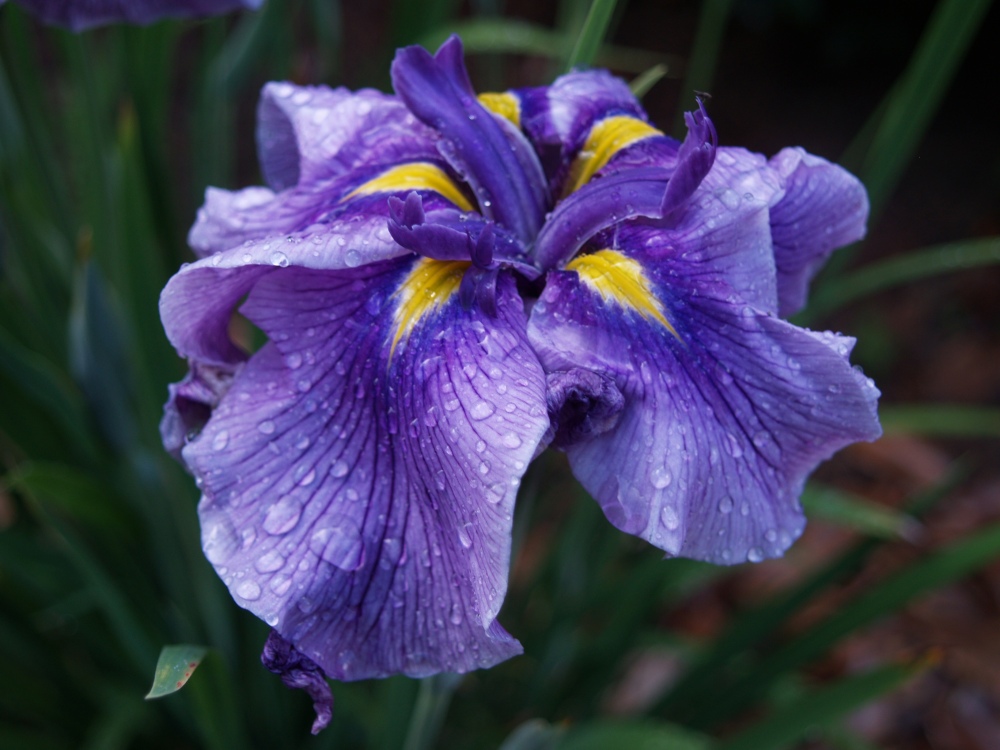
Aquatics that grow in shallow water with their roots in the soil are often called marginals, and there are numerous varieties to choose from. There are tall growing marginals with spiky foliage, ones with lower, shrub-like growth, and low growing types. The best results, I believe, are a combination of tall and medium height growers, with low growing types meandering between.
I am particularly fond of Japanese iris (Iris ensata, above), which are wonderful in bloom for several weeks, but also their spiky leaves give the appearance of cattails without the rapid growth, and are not nearly so tall.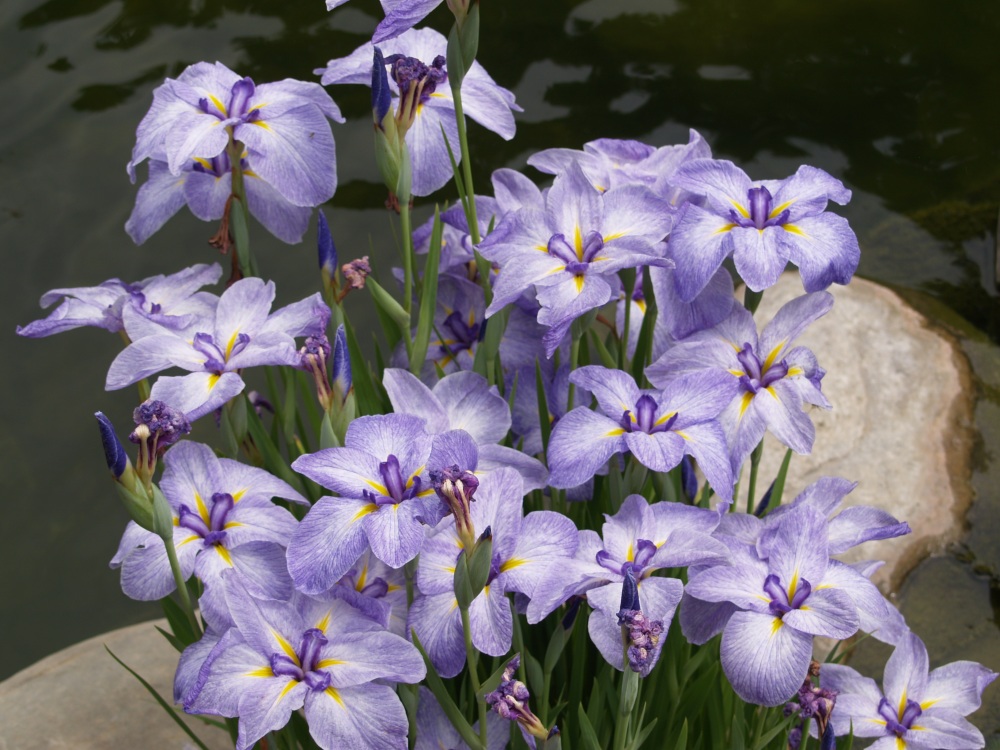
In my large pond (forty by forty five feet) I have planted in a gravel bog filtration area yellow flag iris (below), yellow and white striped acorus varieties, and a variegated-leaf cattail that is not nearly so rapid in growth as the green native type, and each has spread agreeably.
Spreading between the taller cattails and iris are floating hearts (below), with small yellow blooms in mid-summer and a rapid growth rate that must be controlled on occasion with a simple tug to pull the stems that root as they travel. There are a number of similar plants that are useful, though I have had water clover in the past and found that it grew more rapidly and was more difficult to tame. Many submerged aquatics require close attention so that they don’t take over the pond, and though I have none in the ponds today they are essential in ponds without adequate filtration to maintain water clarity.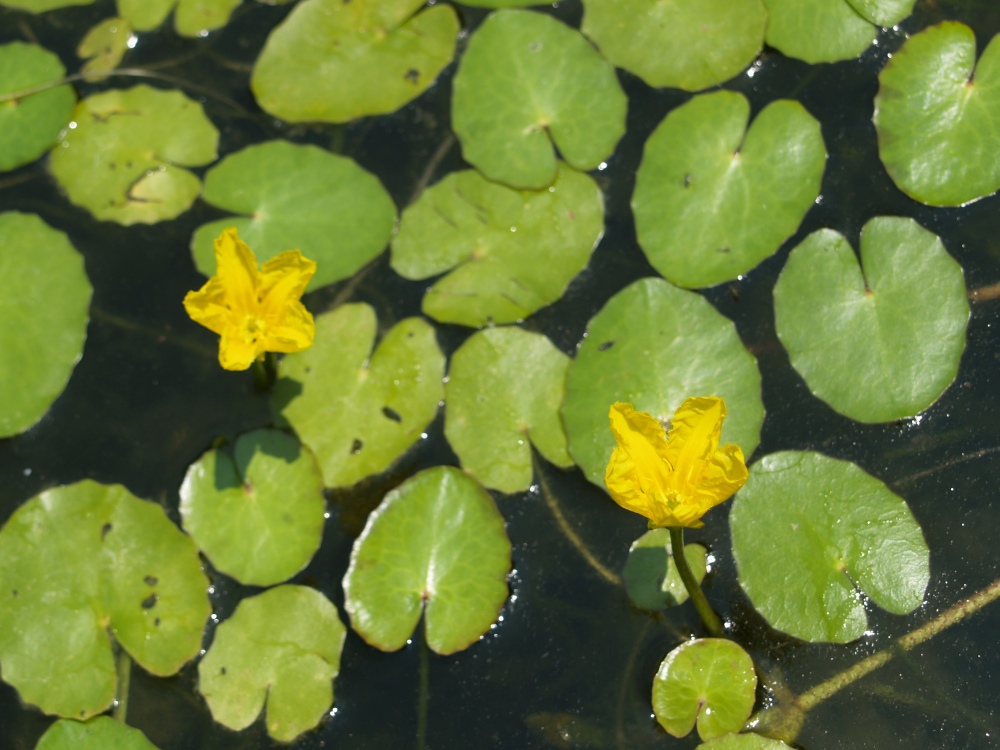
Most sunny ponds will have a waterlily (below) or two planted in water eighteen inches or deeper, and there is no more splendid bloom in the garden. There are many dozens of varieties, and a bit of research is important to choose the type that does not spread too far for the size of the pond.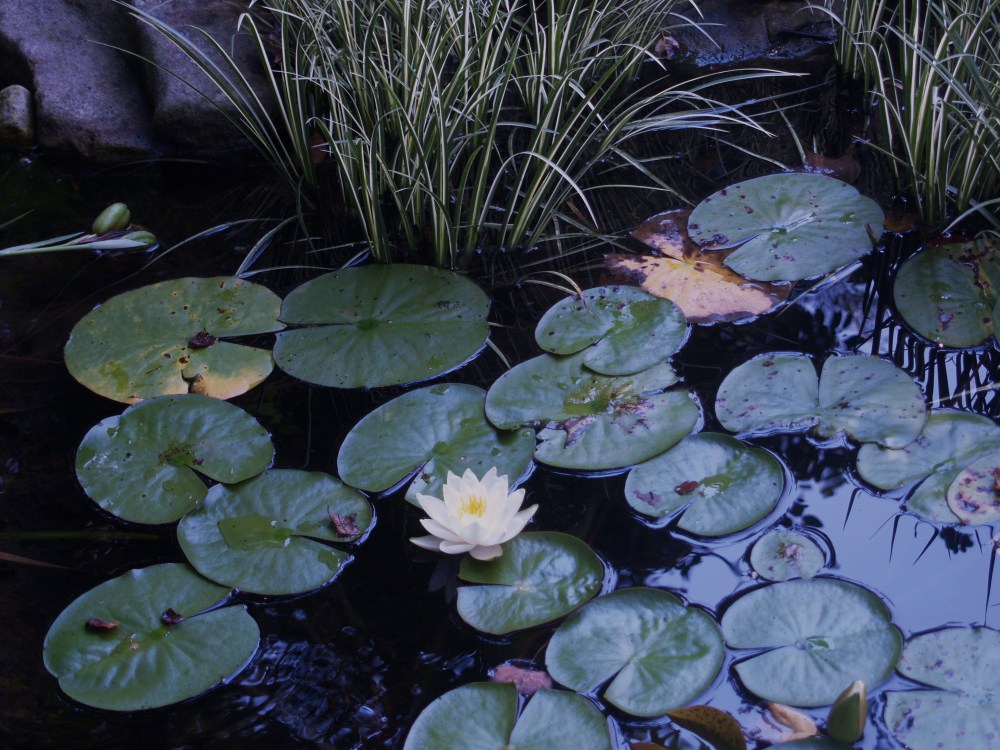
Annual or perennial?
Most of the plants in my ponds are perennials, but I enjoy the unique shapes and huge leaves of tropicals in my garden, and so I have planted elephant ears, papyrus, cannas, and calla lilies in the ponds.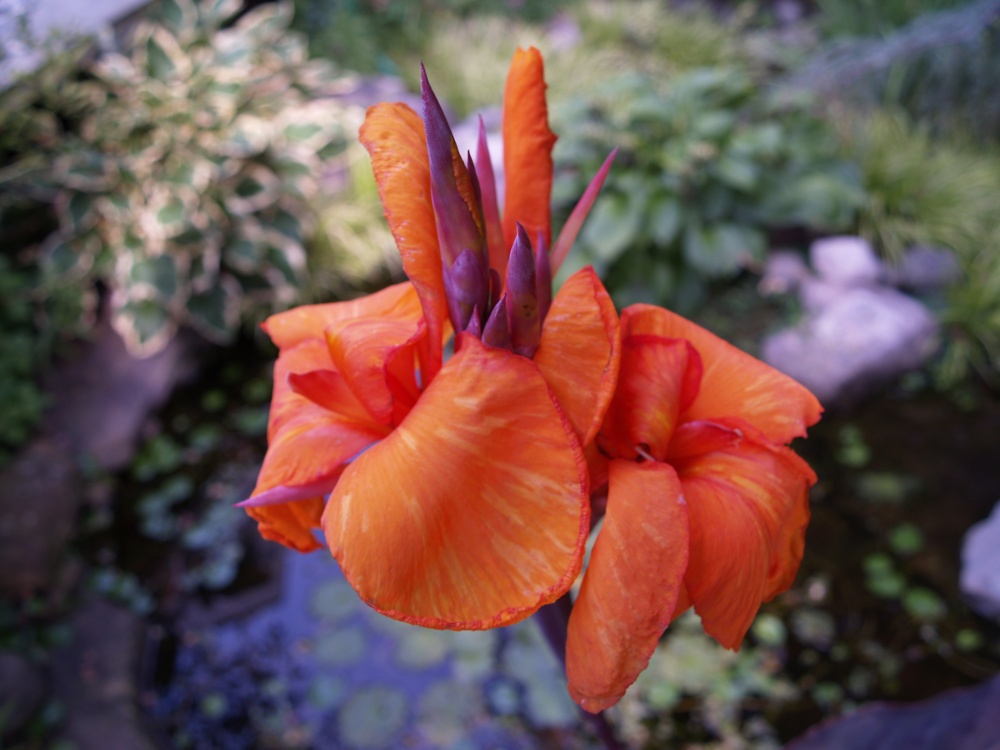 These can grow quite large, and so are not appropriate for small ponds, but the large leaves contrast nicely with the spiky foliage of iris and cattails, and the dark leaves of some cannas and elephant ears add interesting color contrast.
These can grow quite large, and so are not appropriate for small ponds, but the large leaves contrast nicely with the spiky foliage of iris and cattails, and the dark leaves of some cannas and elephant ears add interesting color contrast.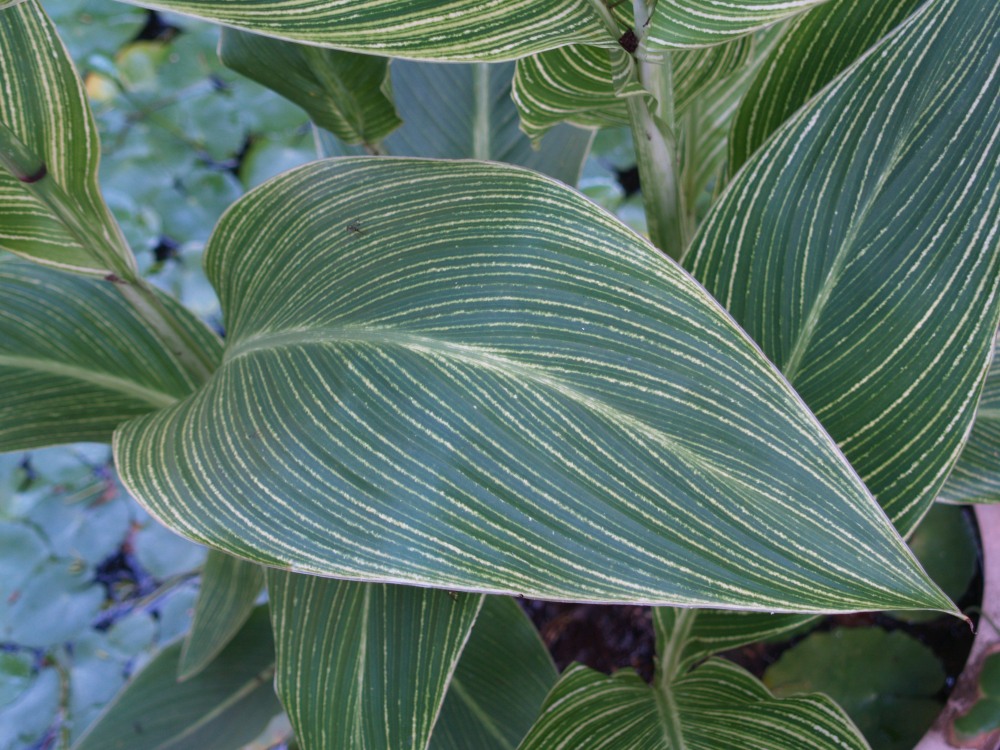
I don’t grow any tropical waterlilies, but they bloom more regularly and the flowers stand above the water and are more conspicuous. All of the tropicals can be pulled from the water prior to freezing temperatures, and kept through the winter, so that new plants need not be purchased each year.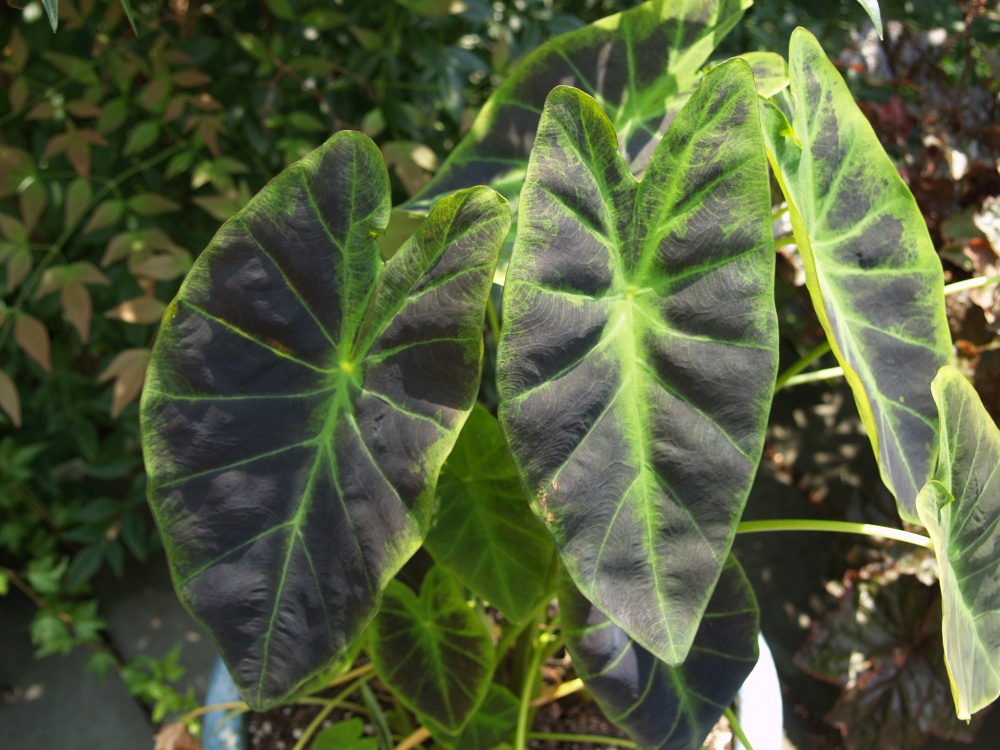
Plant in a container or in the gravel/mud?
Many of the plants in my ponds are planted in small gravel that covers the pond’s rubber liner, and not in plastic containers. Each year I have the opportunity when I clean the ponds to trim back any excessive growth, and so I don’t have problems with waterlilies or cattails overrunning the pond. There are exceptions, and I would not recommend planting lotus in shallow water without a sturdy container since it can rapidly grow out of control.
In small ponds, and if you prefer not to muck around pulling stray roots each spring, it’s more reasonable to plant your aquatics in containers, and given that you are trying to discourage roots from escaping, the best pots to use have no holes (except for the big one at the top). Also, be aware that the small containers in which aquatics are sold are not adequate except for a short period. Most water plants must be transferred into the wide, shallow pots sold for this purpose so that their roots have room enough to grow, or the roots will quickly slip over the top of the small container.
If this seems too complicated, be assured that it need not be, and in fact I have only a few handfuls of plant varieties in my five ponds. In the largest pond there are only five varieties of perennial aquatics, though there are eight or ten varieties of iris, and in a small pond there might be space enough only for a water lily and a marginal type or two.
No design degree is needed to get the pond planting right, just plant in the correct water depth and the plants will do the rest.
One Comment Add yours